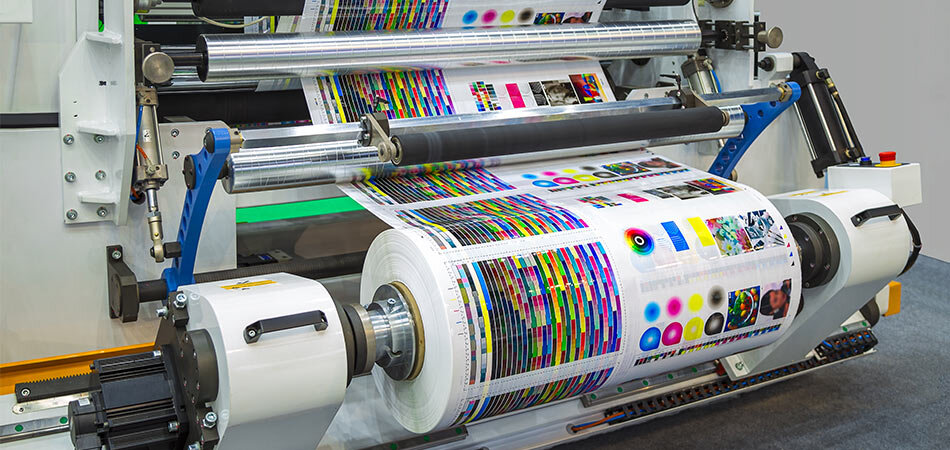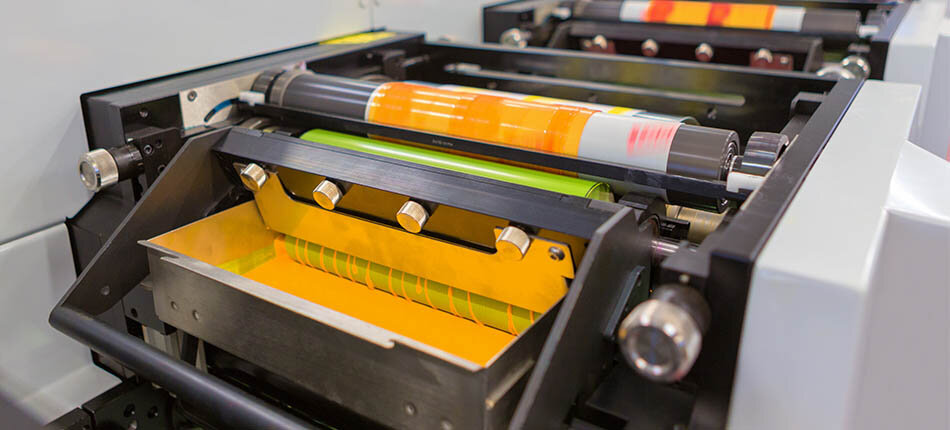Different print processes to make your packaging design look amazing.
Attractive custom packaging design makes all the difference when it comes to the products customers are most likely to pick up off a supermarket shelf. And while the packaging itself must be considered; the label printing is a standout feature that must be eye-catching as well.
The appearance the label makes is heavily reliant on the type of printing process that is used. The right printing process will take your labels to the next level, ensuring the message it sends is clear and concise.
This article will review different types of printing processes, so you are sure to find one that is best suited for your products.
Lithography (aka Litho or Offset)
This is a printing process that uses flexible aluminum plates for running film, paper, metalized and lightweight board stock. It is a very common technique in which the inked image is transferred from a plate to a rubber blanket and then to the printing surface. The printing can be done using 4 color process, also known as CMYK (cyan, magenta, yellow and black inks). Or if a more accurate color is needed, graphic designers can use a spot Pantone color to get a specific color perfectly reproduced.
RECOMMENDED FOR: offset printing is a great choice when large quantities are needed. It provides very accurate color reproduction, and sharp, clean professional looking printing.
The labels produced can be coated in various finishes including the following:
· UV Finish (aka spot UV): This will produce a glossy finish that is long lasting
· Aqueous Finish (aka Soft-touch coating): Available in both matte of glossy, this coating protects labels from dirt and fingerprints, and has a soft, satin feel to it.
· Matte or Gloss Varnish: These finishes can be used all over or in spots to give labels a unique look
Flexography (aka Flexo)
This type of printing uses a relief plate that is made from rubber. One of the main uses is for printing on non-porous substrates required for various types of food and beverage packaging design. It is also great for printing large areas of solid color. It is basically a modern version of letterpress, and it can print on a wide variety of materials including films, paper stocks and pressure sensitive materials. It can feature effects like die cut package designs, laminating and cold-foil stamping.
RECOMMENDED FOR: Flexography printing is best for the packaging of pieces such as labels, boxes, pouches and bags for food and beverages.
Rotogravure
Rotogravure is a print process that uses a cylinder with engraved images. The ink transfers from each cylinder onto a moving web of paper to produce high quality graphics with stunning color.
It was once the major printing technique of newspaper photo features. Now the rotogravure process is used mostly for commercial printing of postcards, magazines, corrugated pieces, and other product packaging.
RECOMMENDED FOR: Rotogravure printing is best for providing consistency for high volume runs.
Digital
While rotogravure is recommended for high volume runs, digital is best for small orders. It is cost efficient since it requires no outside expenses for purchasing plates. It offers crisp text and brilliant colorful images that work well for advertising and photos. It is often used by manufacturers who create custom pieces with variable data technology, and is a good choice when you’re in a time crunch.
RECOMMENDED FOR: Digital printing is best for small orders, that require a cost efficient solution, since it requires no additional cost of plates.
Where should you start?
If you are thinking of updating the look of your label in the coming year, trying a new print process may be the way to do it. Lien Design, a San Diego branding design company that is on top of the latest trends and familiar with all the different print processes you can use. They can help you find one that is perfect for making your products stand out.
Your label is one of the first things people see when looking at your product and it is one of the most identifiable features of your brand. Using the right print process can really set it over the top. Which will you be using for your label and package design to make your labels look terrific?
Get a fast & free, estimate for your next project.










